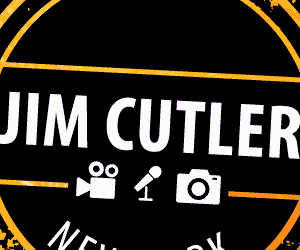Barrett Media produces over 20 stories per day on the music, news, and sports media industries. Stay updated on the latest happenings by signing up to receive our newsletters straight to your inbox.
In my September 16 column, I offered some thoughts about Nielsen’s proposal to change the decades-old “five-minute rule” to three minutes. Based on discussion in the trade press, LinkedIn, and elsewhere, here are some more observations.
It appears to me that people are focusing on percentages emerging from Nielsen’s latest analysis showing that if the three-minute rule were in force during the May 2024 PPM monthly, P6+ AQH for the total week would have increased by 24%. Every other analysis supplied by Nielsen showed AQH increases in the mid 20 percentage range. Cume increases were generally in the single digit percentage range because most of this new listening comes from panelists who already listened for a quarter hour at some other time during the week that qualified under the current rule.
There have been incredulous statements from radio people who are shocked that Nielsen would consider such a move with these big percentage increases, but the percentages hide a fact. In PPM, the PURs (Persons Using Radio) estimates are pathetically low.
Nielsen’s analysis included all 45 non-embedded PPM markets (Nassau-Suffolk, Middlesex-Somerset-Union, and San Jose were not included because they are already counted in New York and San Francisco). Depending on the demo, the increase was anywhere from 0.9 to 1.1 rating points of PUR. What that reveals is how poorly radio has marketed the medium in the face of digital competition.
For example, per Nielsen, the May 2024 PUR for Persons 18-34 total week was a 2.7 rating. While I’d like to see M-F 6A-7P (Nielsen says they ran it but did not include it in their presentation), here’s how to interpret a 2.7 rating: In any average quarter hour (Monday-Sunday 6AM-Midnight), 97.3 percent of all P18-34 were NOT LISTENING TO RADIO. Some tough arithmetic here which is 100 minus 2.7 equals 97.3. Sure, the cume number is much higher (69.6 rating) but that still means that over 30 percent of P18-34 didn’t even give radio a quarter hour during the week. With the three-minute rule, the weekly cume moved up to 73.6, but that meant more than one out of four P18-34 still didn’t use any radio in a week whether over the air or streamed.
The net is that 20-some percent of not much is not a lot. The gap between PPM PURs and diary PURs is major and that’s one of the reasons that Nielsen has proposed the change exclusively for PPM. Admittedly, changing the diary rule would not have anywhere near the PPM effect because almost all entries have rounded times. The best chance for any gain would be the instances where a diary keeper writes down multiple stations in a short period of time. The listening is split evenly between the stations and in some cases, this creates listening sessions of under five minutes. I’ve never seen an analysis like this, but my bet is that the result would be an increase of no more than a couple of percentage points of PUR.
In his October 16 column, Sean Ross suggested that this change would be an opportune time to work on “fixing” commercial radio in the US and he offered several suggestions. You’ve likely heard most of them:
- Reduce the spotloads
- Market the medium
- Provide more choice
- Reinforce “radio” meaning adding the word “radio” to station IDs
- Focus on a new generation of listeners
I agree with Sean, but does anyone believe the people that control the purse strings in radio today are willing to do any of the above? Perhaps adding the word “radio” is possible, but the remainder of his suggestions require investment, a word radio account executives often use with potential clients.
Here’s an idea: Can we bring people back to radio? Why not pick a small Nielsen-rated market that doesn’t have any of the big players or a lot of spill. Then let’s put a kitty together for marketing the medium as well as the individual stations. Nielsen could “donate” by oversampling the market (undoubtedly diaries) to get a better handle on what’s happening. Perhaps some of the “best and brightest” from the agency world could contribute some creative. When the test ends, will Nielsen show any improvement in listening levels? I’d even put in a few bucks to see the results of that experiment. What do you think? Could a concerted industry effort move the needle in a positive way?
Let’s meet again next week.







